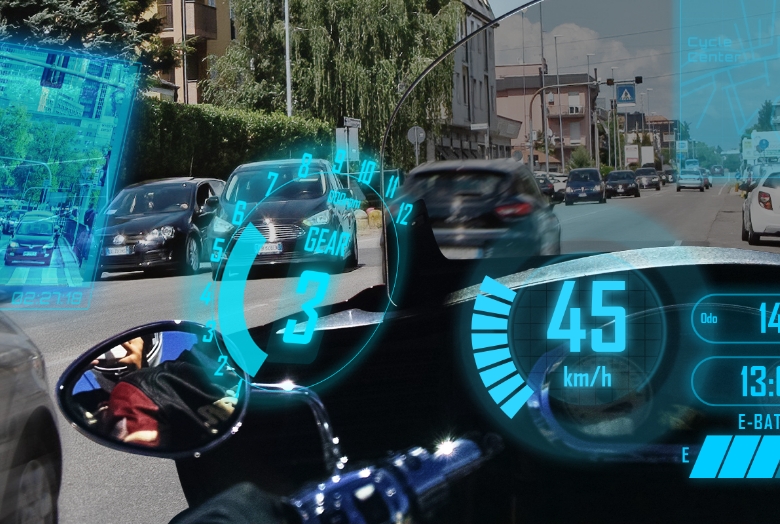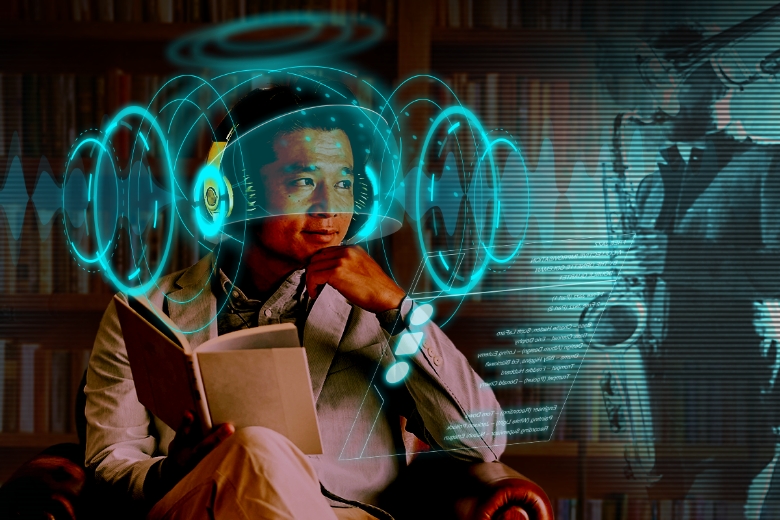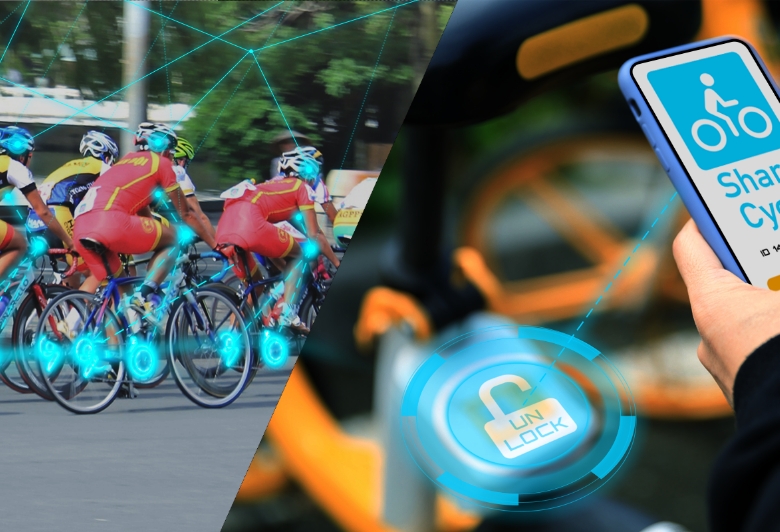Service
Near Future Stories
Three stories to think about
the micro-controllers and their control systems
embedded in all manner of devices
-

STORY 1
Protecting the safety and security of
motorcycle ridersOne fine spring day in 20××, the electric motorcycle I had just bought was running smoothly in the lane. VICS*1 had also advanced, and the traffic jams that existed previously had disappeared from the highways.
The number of accidents had also dropped dramatically thanks to AHS*2, yet the appeal of the two-wheeler lay in the fact that its rider controls their own risk. For that very reason, I pay a sufficient cost for equipment that demands self-responsibility.
A helmet with the latest HUD*3 built in. It displays the optimal route using the navigation system, even for locations you are visiting for the first time, which eliminates stress.
Wind and road noise while riding is minimized, while a microphone headset function connects to your smartphone via Bluetooth. The built-in cameras at the front and rear provide constant monitoring with a 360-degree field of view, and the images are continuously uploaded to cloud storage. The dashcam for a two-wheeler is an indispensable item these days.I wonder what kind of technology is used for the wide-ranging ITS*4 service provided on the highways and the control system that seamlessly controls the various devices used by the user.
Data sent from the roadside inform me of traffic jams on surface streets. Even if Level 5 driving automation is realized, traffic jams will remain to an extent because of speed limitations due to the number of vehicles on the road and the weather conditions. The same applies for vehicular accidents.
That is why technology for safety measures, such as dashcams, continues to evolve. However, the more advanced the technology, the simpler the UI for such devices become, so the simpler operation is welcome. The complexity of the functions and the system to control them appear to be inversely related.
The item closest to the user that supports safety and peace of mind of traffic infrastructure is probably the control system embedded in the devices.※1:Vehicle Information and Communication System
※2:Advanced Cruise-Assist Highway System
※3:Heads-Up Display
※4:Intelligent Transport Systems
-

STORY 2
An era in which everyone enjoys
the sound of their choiceI look forward to listening to old-style jazz of the 1960s after I get home. My favorites are Charlie Parker, John Coltrane, and Miles Davis. With the arrival of sound players that can reproduce sound that is high quality and high-resolution, listeners can enjoy music from any era, as if the music were being played in front of them.
My choice this evening is the famous record “Free Jazz” from 1961. Crisp and colorful tones emerge from the speakers, with Ornette Coleman’s alto saxophone coming from the left channel, and Freddie Hubbard’s trumpet coming from the right. The latest VR (virtual reality) goggles transport me in an instant from my living room to a live performance venue.
In order to enjoy the latest music content, a headset has become essential. VR goggles allow you to enjoy a combination of images and sounds. The fingers of the musicians in the images playing in front of me and the sound source are fully in sync, and the three-dimensionality of the sound gives a realistic sense of spatial expansion. I feel wholly immersed.The sounds are waves generated by vibration of objects, namely, “sound waves.” Those waves vibrate the eardrums, and we sense sounds. Properties of the sound waves are “frequency” and “sound pressure,” and “phases” are a variable for measuring the movement of the sound waves. How accurately that information can be reproduced decides the rating of a sound player.
To reproduce the ideal sound that the user wants, you need a control system that finely adjusts the electrical signals of the sound source properties that have been accurately traced and plays the sound from the speakers.
If you have a VR system that can perfectly control the sound source, you may no longer need a spacious audio room. -

STORY 3
Control system that is optimized
for needsI took part in an amateur road bicycle race for the first time in a while. The race venue appeared like a trade fair for the latest bicycle gear. From college students to high-level amateurs, enthusiasts were absorbed in collecting information on the newest items, discussing the topic endlessly.
The race bikes are fitted with various leading-edge technologies. The top racers who compete in the world’s premier cycling event, the Tour de France, ride lightweight bikes made from the latest materials that weigh approximately 7 kg. Moreover, those bikes are strong enough to withstand speeds in excess of 100 km per hour.
Shifting gears is achieved by wireless electronic control. Anyone would be astonished at how light and smooth the gear shifting is compared to a standard one. An advanced communications control system is employed to maintain safety and smooth performance even without a mechanical shift cable.Cycling computers are popular among cyclists who enjoy touring on days off. The navigation system is a safety measure, and it acquires and records cycling data at the same time, allowing for effective training and dieting needs.
The bicycle is the most widespread transportation tool for people of all ages. On the topic of electronic control, there are also electrically assisted bicycles for town biking. Shared cycle services have become widespread, addressing a wide range of needs from business to leisure. The ability to easily rent and leave a bike is supported by leading-edge ICT.
With the push toward carbon neutrality, the need for bicycles will likely continue to increase. Similar to the development of road bikes loaded with leading-edge technology, ICT control technology has also been involved in the launch of new bicycle services for town use.
A control system optimized for user needs will likely be increasingly important as we head into the future.

